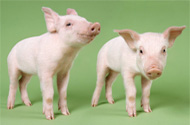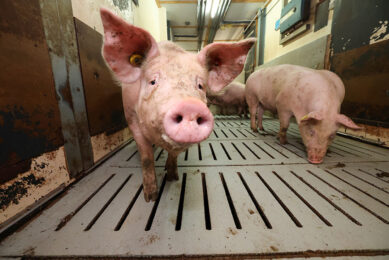EFSA reviews most recent research on animal cloning

EFSA has published a scientific statement on animal cloning following the endorsement of its Scientific Committee. The Scientific Committee concurred that no new scientific information has recently become available that would require reconsideration of the conclusions and recommendations from the Authority’s previous work in this area.
The EFSA statement is based on a review of the most recent scientific research on animal clones and their offspring found in: peer-reviewed scientific literature published since its previous statement in 2009; information gathered during the recent call for data from European research centres and elsewhere; and further discussions with scientific experts on animal cloning.
©
Following a thorough review of the relevant scientific information, EFSA confirms its previous conclusions and recommendations that:
- mortality rates and the number of animals born with developmental abnormalities are higher in animal clones than in conventionally bred animals.
- in relation to food safety, there is no indication that differences exist for meat and milk of clones and their progeny compared with those from conventionally bred animals.
- there is still limited information available on cloning of species other than cattle and pigs, therefore at the moment risk assessment can be carried out only for these two species.
The current statement provides an update on the scientific developments on the cloning of farmed animals for food production with respect to food safety aspects as well as those relating to the health and welfare of animal clones and their offspring.
©
EFSA’s statement also provides information on the efficiency of cloning in comparison with natural breeding and assisted reproductive technologies.
©
Animal cloning
In animal cloning a genetic copy of an animal is produced by replacing the nucleus of an unfertilised egg cell with the nucleus of a body (somatic) cell from an animal to form an embryo. This technique is called somatic cell nuclear transfer (SCNT). The embryo is then transferred to a surrogate mother where it develops until birth. Reprogramming of the donor nucleus from the somatic cell – ©the process that regulates the resetting of the somatic cell nucleus to an embryonic nucleus – ©is considered the main source of adverse effects that may result in developmental abnormalities of animal clones.
In animal cloning a genetic copy of an animal is produced by replacing the nucleus of an unfertilised egg cell with the nucleus of a body (somatic) cell from an animal to form an embryo. This technique is called somatic cell nuclear transfer (SCNT). The embryo is then transferred to a surrogate mother where it develops until birth. Reprogramming of the donor nucleus from the somatic cell – ©the process that regulates the resetting of the somatic cell nucleus to an embryonic nucleus – ©is considered the main source of adverse effects that may result in developmental abnormalities of animal clones.
©











